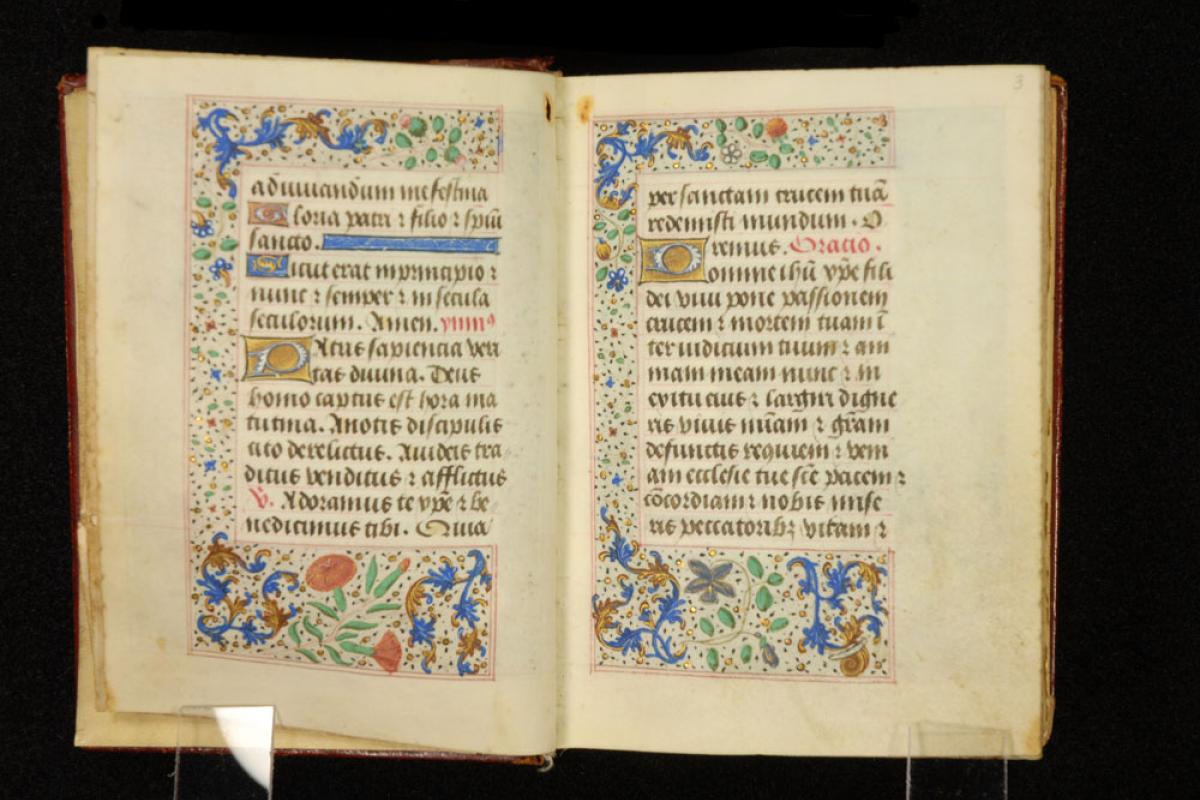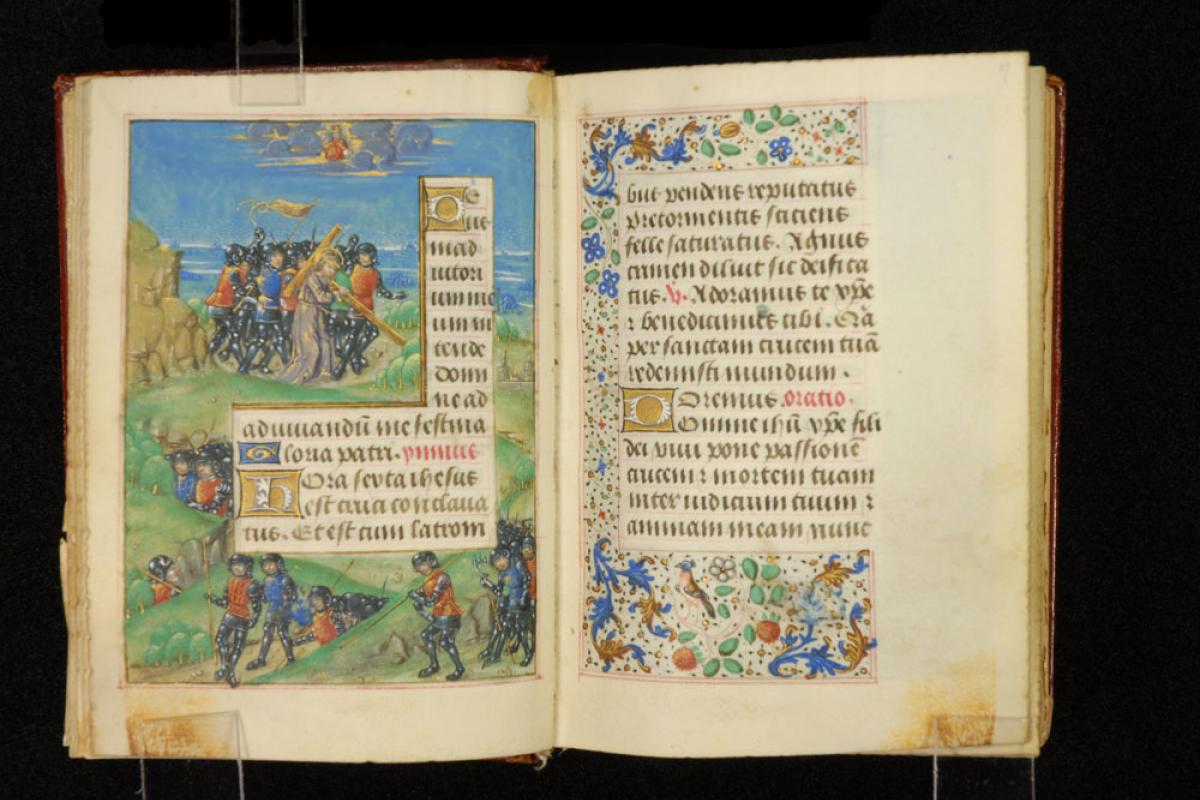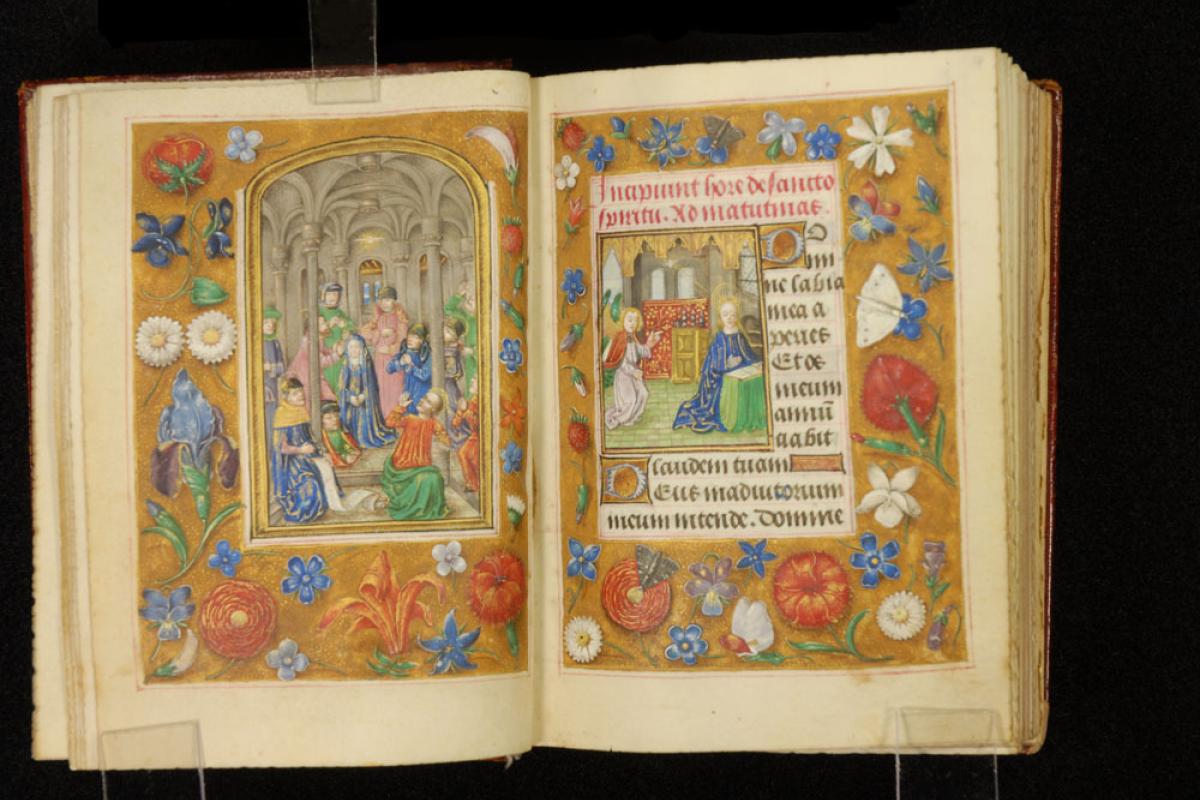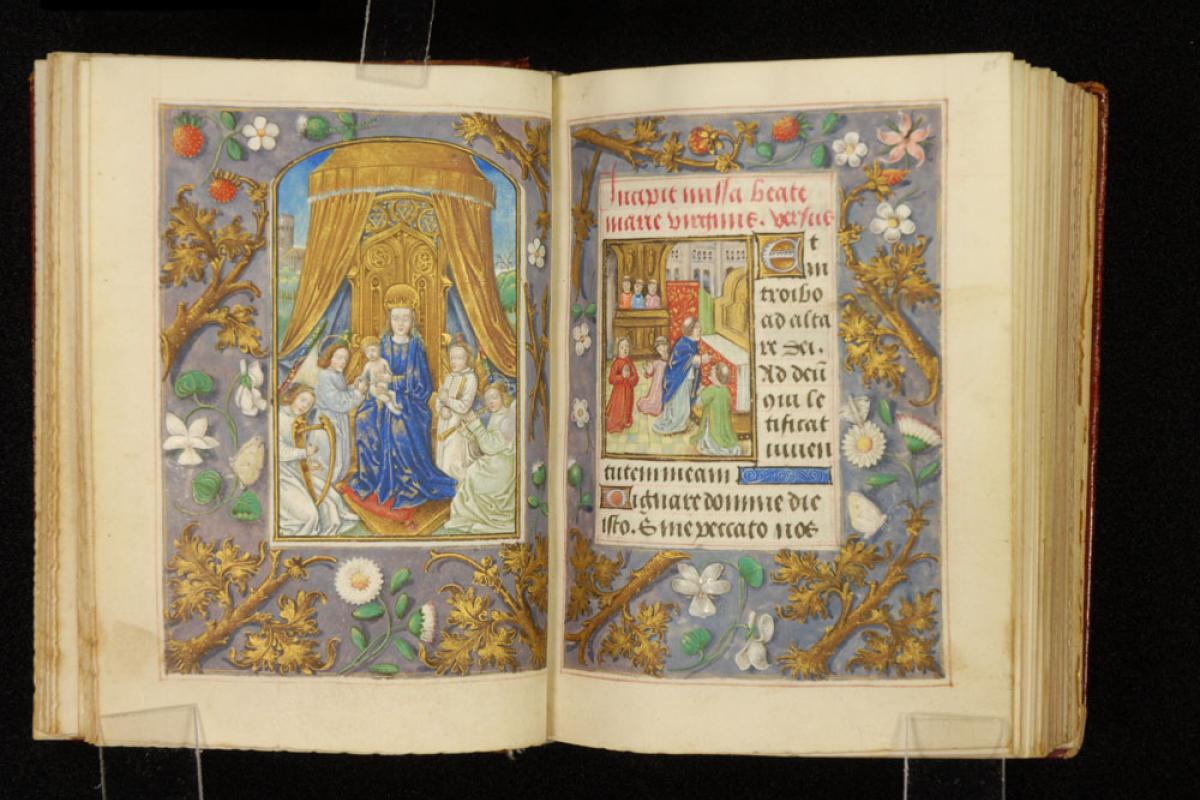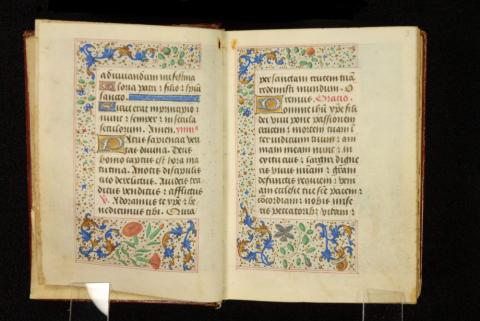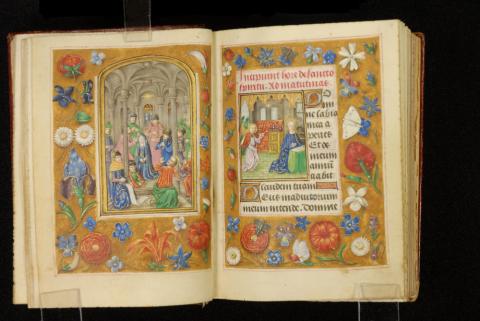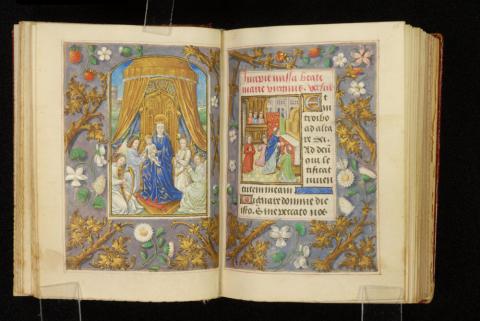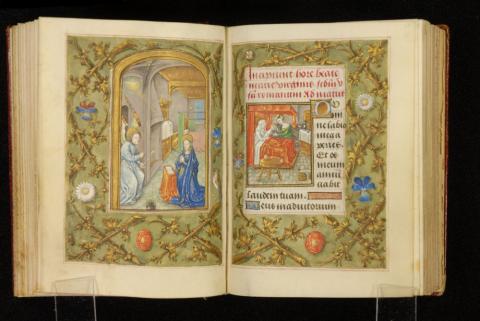Book of Hours
Book of Hours
French, ca. 1515
Images:
folio with text
folio with Road to Calvary
folio with Pentecost
folio with Virgin and Child Enthroned with Angels
folio with Annunciation
Language: Latin, French
parchment
height 15 cm
width 10.5 cm
127 leaves. Bâtard script. 22 lines. Gatherings mostly of 8. Text in Latin and French. Calendar. Gospel Lessons, Obsecro te, O Intermerata, Stabat Mater, Hours of the Virgin, of the Passion, of the Holy Spirit, Psalms, Litany, Office of the Dead, Prayers to the Saints, Passion according to John. 12 large and 27 small miniatures, many decorated borders and initials. Binding: red velvet, 18th c.?
Prior publication: Lackaff, Dalene G., A descriptive catalogue of the manuscript books of hours in the collection of the Mount Angel Abbey Library, M.A. Thesis, University of Oregon, 1999, pp. 58-67
Mount Angel Abbey Library, Ms 31
Jeff Brown, Medieval Portland Research Assistant
Produced in northern France during the early sixteenth century, the lavish decoration of this work, including elaborate architectural frameworks evoking Italian Renaissance art and deeply projecting landscapes, sets it apart from contemporary works that were also produced quickly by high-yield workshops in the area. Subjected to an unfortunate misbinding in its later years, this Book of Hours, with handmade notations in the calendar and elsewhere, informs more about the personality than the identity of its unknown patron.
Parshall, Peter. Illuminated Manuscripts from Portland Area Collections. Portland, OR: Portland Art Museum, 1978, p. 42 - Quoted with permission
By the turn of the sixteenth century manuscript illumination was well into its final phase. Hand-made Books of Hours had to compete with less expensive printed editions available in large numbers by this time. The richly illuminated vellum codex had become a pretense in an era of rapidly changing values. Here the miniatures are set in architectural borders that overtly define the frame as a window opening into space. The figures are repetitive and graceless, but colorfully rendered and highlighted in gold. The style and calendar point to Northern France, possibly the flourishing school of Rouen. St. Hune (April 15), included in the calendar, was only canonized in 1519, late in the first quarter of the century.
Wilma Fitzgerald, PhD, SP - Quoted with permission from an unpublished study
Liber horarum (cum kalendario). Saec. XV. FF ii + 127 + ii. 153 x 102 (90 x 60) mm., one column, 22 lines. Elaborate architectural borders with columns and arches on all pages with full-page miniatures. Panel borders with flora in outer margin of all other pages with miniatures. Four- and three-line initials in gold on deep red on pages with full-page miniatures. Numerous 2-and 1-line initials in gold on deep red. Line endings in gold on red in litany. A full complement of miniatures: John, Luke, Matthew, Mark, Pieta, Virgin and Child, Virgin Praying before cross, Annunciation, Visitation, Nativity with Shepherd receiving annunciation in roundel, Annunciation to Shepherds with dog in roundel, Adoration of the Magi, Circumcision, Flight into Egypt, God the Father and Virgin, Crucifixion, Pentecost with haloed figure in roundel, David and Bathsheba with David and Goliath in roundel, Raising of Lazarus with Skull and bone in roundel, John the Baptist, John the Evangelist, Michael, Peter and Paul, James, Lawrence, Christopher, Sebastian, Nicholas, Claudius, Mary Magdalene, Catharine, Barbara, Flagellation, Crowning with thorns, Ecce Homo, Carrying of Cross, Crucifixion, Deposition. Modern pigskin (?) binding over boards. Described in Parshall, Illuminated Manuscripts # 18, pp. 42-4.
Calendar (in French). Feasts in red include Ivo, Martin, Eligius, Louis, Lupus, and Dionysius, Columban, Abdon, Banon, Brendan, Aquilinus, Alban, Bertin and Junianus.
Gospel excerpts; Obsecro te, O intemerata, Stabat mater; Hours of the Virgin (Use of Rome); Hours of the Cross; Hours of the Holy Spirit; 7 Penitential Psalms; Litany and prayers; Office of the Dead; Prayers to John the Baptist, John the Evangelist, Michael, Peter and Paul, James, Lawrence, Christopher, Sebastian, Nicholas, Claudius, Mary Magdalene, Catherine, Barbara, Passion excerpt from John.

